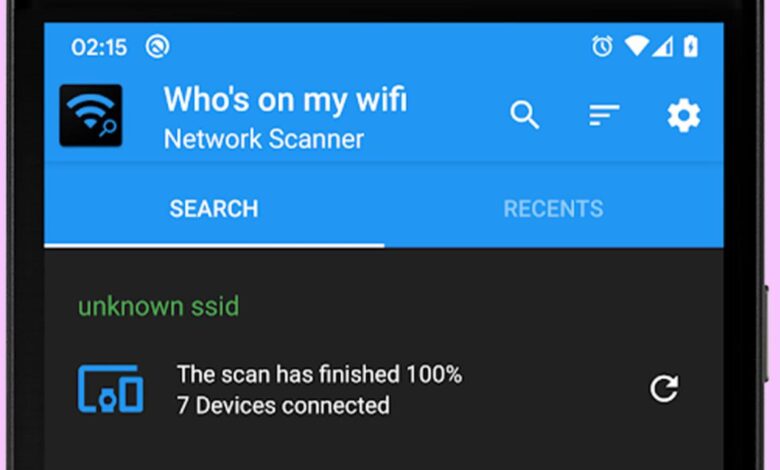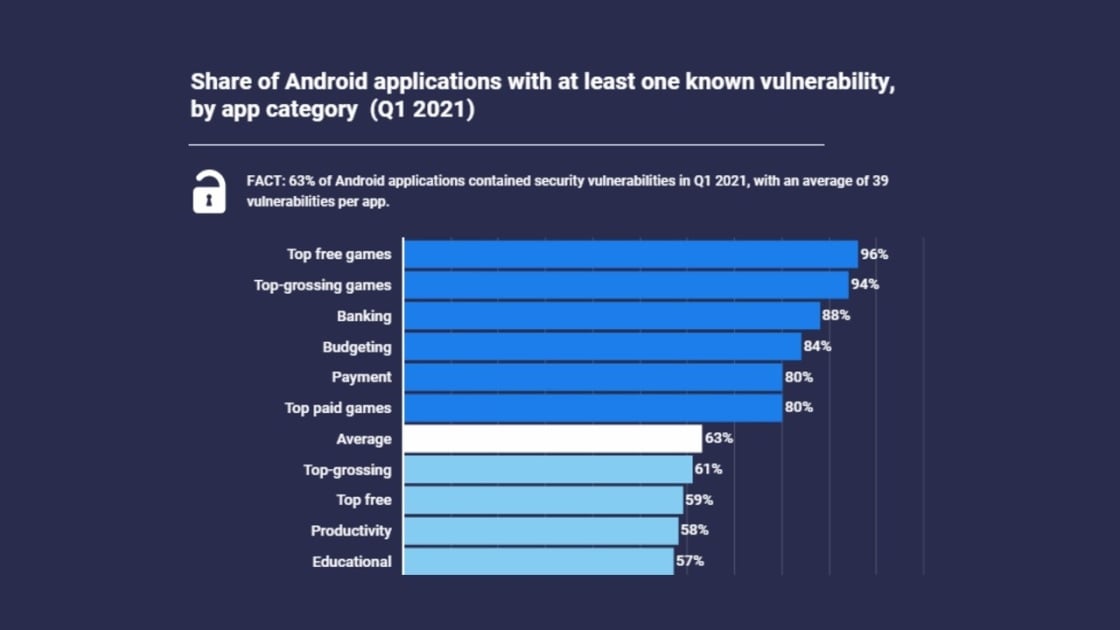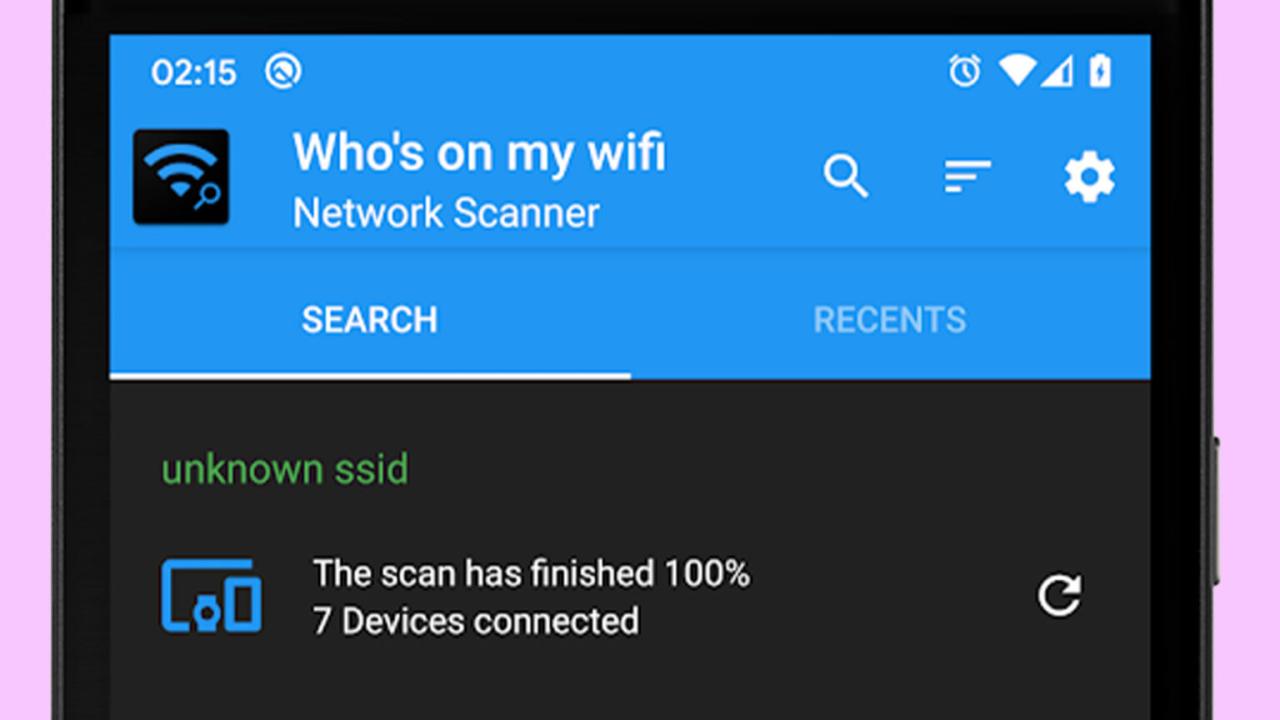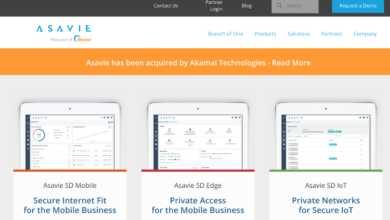
Android apps hosted on Google Cloud are vulnerable to hackers
Android apps hosted on Google Cloud are vulnerable to hackers – it’s a chilling reality. We often trust the cloud to keep our data safe, but the truth is, even Google’s robust infrastructure can’t eliminate all risks. This post dives deep into the vulnerabilities affecting Android apps hosted on Google Cloud, exploring common attack vectors, the limitations of existing security measures, and crucial steps developers can take to bolster their app’s defenses.
We’ll cover everything from insecure coding practices to network vulnerabilities and data protection strategies, arming you with the knowledge you need to build safer, more secure apps.
Think of it like this: your app is a house, Google Cloud is the neighborhood, and hackers are the burglars. A strong foundation (secure coding), sturdy locks (data encryption), and a vigilant neighborhood watch (Google’s security features) are all essential for protection. But even the best security measures can be bypassed if vulnerabilities exist. We’ll explore these vulnerabilities and how to mitigate them.
Vulnerability Types in Android Apps on Google Cloud
Android apps hosted on Google Cloud, while benefiting from the platform’s robust infrastructure, remain susceptible to various security vulnerabilities. These vulnerabilities can stem from insecure coding practices within the app itself, misconfigurations of the cloud environment, or a combination of both. Understanding these vulnerabilities is crucial for developers to build secure and resilient applications.
Insecure Coding Practices and Their Impact
Insecure coding practices are a major source of vulnerabilities in Android apps. These practices can range from improper input validation, leading to injection attacks, to the use of hardcoded credentials, exposing sensitive information. For instance, failing to sanitize user inputs before using them in database queries can result in SQL injection vulnerabilities, allowing attackers to manipulate the database and potentially gain unauthorized access to data.
Similarly, neglecting to properly handle exceptions can lead to crashes and information leaks. The impact of these insecure practices can range from minor inconveniences to complete compromise of the application and its associated data, resulting in financial losses, reputational damage, and legal liabilities.
Types of Attacks Targeting Cloud-Hosted Android Apps
Several attack vectors target cloud-hosted Android apps. SQL injection attacks, as mentioned earlier, exploit vulnerabilities in database interactions. Cross-site scripting (XSS) attacks inject malicious scripts into the app’s user interface, potentially stealing user data or redirecting them to phishing sites. Denial-of-service (DoS) attacks overwhelm the app’s resources, making it unavailable to legitimate users. Another significant threat is insecure API access, where attackers exploit weaknesses in the APIs used by the app to communicate with the backend services on Google Cloud.
This can lead to unauthorized access to data, modification of data, or even complete control of the backend systems. Finally, improper authentication and authorization mechanisms can allow attackers to bypass security controls and access sensitive functionalities or data.
Hypothetical Attack Scenario: SQL Injection
Imagine an Android app that allows users to search for products using a search bar. The app uses a poorly written SQL query to retrieve results from a database hosted on Google Cloud. If the app doesn’t properly sanitize user inputs, an attacker could inject malicious SQL code into the search bar. For example, entering ‘ OR ‘1’=’1′– into the search bar might bypass authentication checks and retrieve all product data from the database.
This is because the injected code alters the SQL query to always return true, granting the attacker access to sensitive information like pricing, inventory, and customer data.
Common Vulnerabilities, Severity, and Mitigation Strategies
| Vulnerability | Severity | Mitigation Strategy |
|---|---|---|
| SQL Injection | Critical | Use parameterized queries or prepared statements; input validation and sanitization |
| Cross-Site Scripting (XSS) | High | Encode user inputs; use a web application firewall (WAF); implement content security policy (CSP) |
| Denial-of-Service (DoS) | High | Implement rate limiting; use a content delivery network (CDN); distributed denial-of-service (DDoS) protection |
| Insecure API Access | Critical | Use HTTPS; implement API keys and OAuth 2.0; rate limiting and input validation for API endpoints |
| Improper Authentication and Authorization | Critical | Use strong password policies; implement multi-factor authentication (MFA); role-based access control (RBAC) |
Google Cloud Security Features and Their Limitations
Google Cloud Platform (GCP) offers a robust suite of security features designed to protect Android apps hosted on its infrastructure. However, no security system is impenetrable, and relying solely on GCP’s built-in features without implementing additional security best practices leaves your app vulnerable. Understanding both the strengths and weaknesses of GCP’s security offerings is crucial for building a truly secure Android application deployment.
GCP Security Features for Android App Hosting
GCP provides several layers of security, including Identity and Access Management (IAM), Virtual Private Clouds (VPCs), and various security services like Cloud Armor and Cloud Key Management Service (KMS). IAM allows granular control over access to resources, enabling developers to restrict who can access specific parts of their application’s infrastructure. VPCs provide isolated network environments, enhancing security by limiting exposure to external threats.
Cloud Armor acts as a web application firewall, protecting against common attacks like DDoS and SQL injection. KMS safeguards cryptographic keys, essential for securing sensitive data within the app. These features, when properly configured, significantly reduce the risk of various security breaches.
Limitations of GCP Security Features
Despite the robust nature of GCP’s security features, they have limitations. For instance, even with IAM’s granular control, human error or compromised credentials can lead to unauthorized access. Sophisticated attacks, such as zero-day exploits targeting vulnerabilities in the Android operating system itself or within the app’s code, might bypass GCP’s network-level security measures. Furthermore, reliance on solely GCP’s managed services without implementing proper application-level security (e.g., input validation, secure coding practices) leaves significant vulnerabilities.
A misconfigured firewall or a poorly secured database instance, even within a VPC, can still expose the app to attacks.
Scenarios Where GCP Security Measures Might Fail
Consider a scenario where a developer accidentally grants excessive permissions to a service account, enabling an attacker to gain unauthorized access if that account is compromised. Another example involves a sophisticated phishing attack targeting a developer, leading to credential theft and subsequent access to the app’s infrastructure. Even with Cloud Armor, a well-crafted attack that exploits a previously unknown vulnerability in the application’s code could bypass the firewall’s protections.
Finally, neglecting to regularly update the Android app and its dependencies leaves it susceptible to known vulnerabilities, potentially allowing attackers to exploit weaknesses even with robust GCP security in place.
Best Practices for Configuring GCP Security Settings
Implementing the principle of least privilege is paramount. Grant only the necessary permissions to each service account and user. Regular security audits and penetration testing are essential to identify and address potential vulnerabilities. Enable multi-factor authentication (MFA) for all accounts accessing the GCP environment. Utilize Cloud Security Command Center for centralized security monitoring and incident response.
Keep all software components, including the Android app, its dependencies, and the GCP infrastructure, up-to-date with the latest security patches. Implement robust logging and monitoring to detect suspicious activities promptly.
Recommended Security Tools and Services
Beyond GCP’s native security features, consider integrating additional security tools. Static and dynamic application security testing (SAST and DAST) tools can help identify vulnerabilities in the Android app’s code. Intrusion detection and prevention systems (IDS/IPS) can provide an extra layer of protection against network-based attacks. Security Information and Event Management (SIEM) systems can aggregate security logs from various sources, providing a comprehensive view of the security posture.
Regular vulnerability scanning and penetration testing by external security experts can further strengthen the overall security of the Android app deployment on GCP.
Secure Development Practices for Android Apps

Building secure Android applications is paramount, especially when deploying them to a cloud environment like Google Cloud. Insecure coding practices can leave your app vulnerable to a range of attacks, from data breaches to complete application compromise. Proactive security measures during the development lifecycle are crucial for mitigating these risks and ensuring the confidentiality, integrity, and availability of your application and user data.
Secure Handling of Sensitive Data
Protecting sensitive data, such as user credentials, personal information, and financial details, is a top priority. Failing to do so can result in significant legal and reputational damage. This involves employing robust encryption techniques both in transit and at rest, using secure storage mechanisms, and limiting data access to only authorized components.
For example, never store passwords in plain text. Instead, use a strong hashing algorithm like bcrypt or Argon2 to securely store password hashes. Similarly, encrypt sensitive data at rest using libraries like the Android KeyStore System. This provides hardware-backed security, protecting your data even if the device is compromised.
Insecure Example (Storing a password in plain text):
String password = "mySecretPassword";
SharedPreferences prefs = getSharedPreferences("myPrefs", Context.MODE_PRIVATE);
prefs.edit().putString("password", password).apply();
Secure Example (Storing a password hash using bcrypt):
// Requires a bcrypt library (e.g., BCrypt)
String password = "mySecretPassword";
String hashedPassword = BCrypt.hashpw(password, BCrypt.gensalt());
SharedPreferences prefs = getSharedPreferences("myPrefs", Context.MODE_PRIVATE);
prefs.edit().putString("passwordHash", hashedPassword).apply();
Data Validation and Sanitization
Data validation and sanitization are essential to prevent injection attacks, such as SQL injection and cross-site scripting (XSS). These attacks exploit vulnerabilities in how an application handles user-supplied input. Always validate and sanitize all user inputs before using them in database queries or displaying them on the UI.
Always validate data against expected formats and lengths. For example, if you expect an email address, verify that it matches a valid email pattern using regular expressions. Never trust user-supplied data; treat it as potentially malicious.
Insecure Example (Vulnerable to SQL Injection):
String username = request.getParameter("username");
String query = "SELECT
- FROM users WHERE username = '" + username + "'";
Secure Example (Using parameterized queries to prevent SQL Injection):
String username = request.getParameter("username");
String query = "SELECT
- FROM users WHERE username = ?"; // Parameterized query
// Use a prepared statement to safely insert the username
Secure Development Checklist for Android Apps Targeting Google Cloud
Before deploying your Android app to Google Cloud, thoroughly review this checklist:
A comprehensive security checklist is vital to ensure your application’s resilience against various threats. This checklist provides a structured approach to identifying and mitigating potential vulnerabilities throughout the development lifecycle. Regular audits and penetration testing further strengthen your application’s security posture.
- Use HTTPS for all network communication.
- Employ strong encryption for sensitive data (both in transit and at rest).
- Validate and sanitize all user inputs.
- Implement proper authentication and authorization mechanisms.
- Use secure storage for API keys and other credentials.
- Regularly update libraries and dependencies.
- Conduct thorough security testing (static and dynamic analysis).
- Implement robust error handling and logging.
- Follow Google’s security best practices for Android development.
- Utilize Google Cloud’s security features (e.g., Cloud Armor, Cloud Key Management Service).
Network Security and Data Protection
Securing your Android app’s network communication and protecting user data is paramount when hosting on Google Cloud. A robust security strategy needs to encompass both in-transit and at-rest data protection, coupled with a well-defined network architecture. Failing to do so leaves your app vulnerable to a range of attacks, from data breaches to complete application compromise.Network security plays a crucial role in preventing unauthorized access to your app’s backend infrastructure and user data.
This involves securing the communication channels between your app, the Google Cloud servers, and any other third-party services. Data encryption is equally vital, safeguarding sensitive information from prying eyes, whether during transmission or when stored. A poorly configured network or weak encryption can expose your app to significant risks.
Network Configuration Vulnerabilities and Their Impact
Improperly configured network settings can create significant vulnerabilities. For example, failing to utilize a Virtual Private Cloud (VPC) network within Google Cloud exposes your app’s servers to the broader internet, increasing the attack surface. Similarly, neglecting to implement appropriate firewall rules can leave ports open to malicious activity. A lack of proper authentication and authorization mechanisms can allow unauthorized access to sensitive data and resources.
The impact of these vulnerabilities can range from data breaches and financial losses to reputational damage and legal repercussions. Consider a scenario where an attacker gains access due to an open port; they could potentially steal user credentials, financial information, or other sensitive data, leading to significant consequences.
Secure Network Architecture for Google Cloud, Android apps hosted on google cloud are vulnerable to hackers
A secure network architecture for hosting Android apps on Google Cloud should incorporate several key elements. Firstly, utilizing a VPC network isolates your app’s resources from the public internet, reducing the risk of exposure. Implementing robust firewall rules, restricting access only to necessary ports and IP addresses, is critical. Leveraging Google Cloud’s Identity and Access Management (IAM) system allows for granular control over access permissions, ensuring only authorized users and services can interact with your app’s infrastructure.
Implementing a Web Application Firewall (WAF) can further protect against common web attacks such as SQL injection and cross-site scripting (XSS). Regular security audits and penetration testing are essential to identify and address vulnerabilities before they can be exploited.
Data Encryption Methods
Robust data encryption is crucial for protecting sensitive user data both in transit and at rest. For data in transit, HTTPS should always be used, ensuring data is encrypted using TLS/SSL protocols. For data at rest, encryption at the database level (e.g., using Google Cloud SQL’s encryption features) is essential. Furthermore, consider employing end-to-end encryption whenever possible, providing an extra layer of security.
This means encrypting data on the user’s device before transmission and decrypting it only on the authorized server. For example, using strong encryption algorithms like AES-256 for both in-transit and at-rest data provides a high level of protection. Remember to securely manage encryption keys, as compromised keys negate the protection offered by encryption.
Protecting Sensitive User Data
Protecting sensitive user data requires a multi-layered approach. This includes implementing strong authentication and authorization mechanisms, such as multi-factor authentication (MFA), to prevent unauthorized access. Regular security assessments and penetration testing should be conducted to identify and address vulnerabilities. Data loss prevention (DLP) tools can help monitor and prevent sensitive data from leaving the controlled environment. Compliance with relevant data privacy regulations (e.g., GDPR, CCPA) is also crucial.
Finally, a comprehensive incident response plan should be in place to mitigate the impact of any security breaches. For example, implementing robust logging and monitoring capabilities allows for quick detection and response to suspicious activities.
Seriously, the news about Android apps on Google Cloud being vulnerable to hackers is pretty scary. It makes you think about safer development options, and that’s where exploring alternatives like domino app dev the low code and pro code future becomes crucial. Considering the potential security breaches, rethinking app development strategies for better protection is essential for all of us.
Incident Response and Mitigation
Responding to a security breach affecting your Android app on Google Cloud requires a swift and coordinated effort. A well-defined incident response plan is crucial for minimizing damage, restoring service quickly, and preventing future incidents. This plan should detail procedures for detection, containment, eradication, recovery, and post-incident activity. Without a proactive approach, a breach can lead to significant financial losses, reputational damage, and legal repercussions.The steps involved in effectively responding to a security incident are interconnected and require careful execution.
A delayed or poorly executed response can exacerbate the problem and increase the overall impact. The speed and effectiveness of the response directly correlate with the overall cost and damage control.
Incident Response Plan Components
A comprehensive incident response plan Artikels the roles and responsibilities of team members, communication protocols, and escalation paths. It should cover various scenarios, including data breaches, denial-of-service attacks, and malware infections. Regular testing and updates ensure the plan remains effective and relevant to evolving threats. For example, a plan might include a pre-defined communication tree for notifying relevant stakeholders, including legal counsel and public relations teams.
It should also detail the process for engaging external cybersecurity experts if needed. The plan should be easily accessible and understandable to all team members.
Mitigation Strategies
Mitigation strategies focus on minimizing the impact of a successful attack. These strategies should be integrated into the incident response plan and implemented concurrently with other response actions. Examples include immediately disabling compromised accounts, isolating affected systems to prevent further spread of malware, and deploying patches to address known vulnerabilities. Another critical mitigation strategy involves implementing robust logging and monitoring to facilitate quick detection of future attacks.
For instance, if a SQL injection vulnerability is exploited, immediately patching the application and implementing input validation can prevent further attacks. Regular security audits and penetration testing can identify and address potential vulnerabilities before they are exploited.
Incident Response Process Flowchart
Imagine a flowchart with the following steps:
1. Detection
An anomaly is detected (e.g., unusual login attempts, unexpected traffic spikes, or security alerts from Google Cloud’s security tools).
2. Analysis
The nature and scope of the incident are assessed. This includes identifying the affected systems, the type of attack, and the potential impact.
3. Containment
Actions are taken to isolate the affected systems and prevent further damage. This may involve disabling accounts, blocking IP addresses, or shutting down affected services.
4. Eradication
The root cause of the incident is identified and removed. This may involve removing malware, patching vulnerabilities, or restoring systems from backups.
5. Recovery
Affected systems and services are restored to their normal operational state. This may involve restoring data from backups, reconfiguring systems, and retesting applications.
6. Post-Incident Activity
Lessons learned are documented, and improvements are made to the security posture to prevent future incidents. This includes updating the incident response plan, conducting security awareness training, and implementing new security controls.
Resources and Tools for Incident Response
Effective incident response relies on the availability of appropriate resources and tools. These tools can automate many aspects of the response, accelerating the process and minimizing the impact.
- Google Cloud Security Command Center: Provides centralized security monitoring and incident response capabilities.
- Cloud Logging and Monitoring: Enables real-time monitoring of application and infrastructure logs, facilitating early detection of anomalies.
- Cloud Security Scanner: Automatically scans for vulnerabilities in your applications and infrastructure.
- Third-party Security Information and Event Management (SIEM) tools: These tools aggregate and analyze security logs from various sources, providing a comprehensive view of your security posture.
- Forensic tools: Used to investigate the root cause of the incident and gather evidence.
Final Review

Securing Android apps on Google Cloud isn’t a one-size-fits-all solution; it’s an ongoing process requiring vigilance and proactive measures. By understanding the common vulnerabilities, leveraging Google Cloud’s security features effectively, implementing robust secure coding practices, and establishing a comprehensive incident response plan, developers can significantly reduce their app’s risk profile. Remember, the best defense is a multi-layered approach that combines strong security measures with a culture of proactive security awareness.
Stay informed, stay vigilant, and build secure apps!
Popular Questions: Android Apps Hosted On Google Cloud Are Vulnerable To Hackers
What are the most common types of attacks against Android apps on Google Cloud?
Common attacks include SQL injection, cross-site scripting (XSS), denial-of-service (DoS) attacks, and unauthorized data access due to insecure APIs or storage.
How can I check if my Android app is vulnerable?
Regular security audits, penetration testing, and using static and dynamic analysis tools can help identify vulnerabilities. Google also offers various security scanning services.
What is the role of Firebase in securing my Android app on Google Cloud?
Firebase offers several security features like authentication, database security rules, and cloud functions, but it’s not a complete solution; proper app-level security is still crucial.
What happens if my app suffers a security breach?
Having a comprehensive incident response plan is vital. This involves identifying the breach, containing the damage, investigating the root cause, remediating the vulnerability, and notifying affected users.





